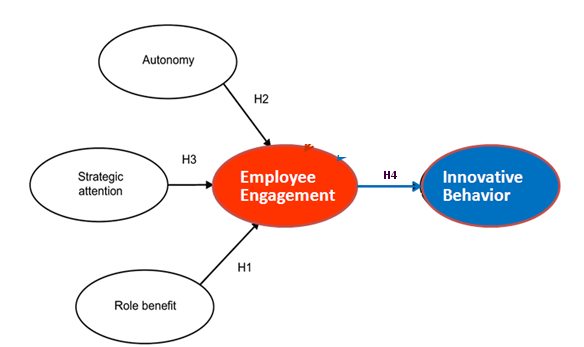Peerless Kahn 1990 Employee Engagement Model

In engagement people employ and express themselves physically cognitively and emotionally during role performances.
Kahn 1990 employee engagement model. 22 rows William A Kahn. Alan Saks antecedents consequences of employee engagement Saks acknowledged that psychologist William Kahns 1990 model identified the psychological conditions necessary for engagement. Physical demands time pressure shift work are.
In 1990 when Jack Welch was leading General Electric to ever-greater heights by preaching the power of firing 10 percent of his employees each year Dr. In fact a shift away from performance goals and outcomes toward employee engagement and its psy-chological antecedents might also improve manageremployee communication and the manageremployee relationship. Kahna professor of organizational behavior at Boston Universitys Questrom School of Business.
This includes the expression of thoughts and. KAHN Boston University This study began with the premise that people can use varying degrees of their selves physically cognitively and emotionally in work role. To compare two models of employee engagement.
We conclude that there continues to be a lack of consensus on the meaning of employee engagement as well as concerns about the validity of the most popular measure of. His model emphasizes that there are three psychological conditions that are associated with personal engagement and disengagement of work. And people vary in their levels of attachment to.
Although it is acknowledged and accepted that employee engagement is a multi-faceted construct as previously suggested by Kahn 1990 Truss et al 2006 define employee engagement simply as passion for work a psychological state which is seen to encompass the three dimensions of engagement discussed by Kahn 1990 and captures the. Meaningfulness availability and safety Refer. These elements of employee engagement are identified from the literature Harter et al 2002.
Measured employee engagement by using three different approaches namely engagement as a. PSYCHOLOGICAL CONDITIONS OF PERSONAL ENGAGEMENT AND DISENGAGEMENT AT WORK WILLIAM A. Employee engagement is a fundamental concept in the effort to understand and describe both qualitatively and quantitatively the nature of the relationship between an organization and its employeesAn engaged employee is defined as one who is fully absorbed by and enthusiastic about their work and so takes positive action to further the organizations reputation and interests.










